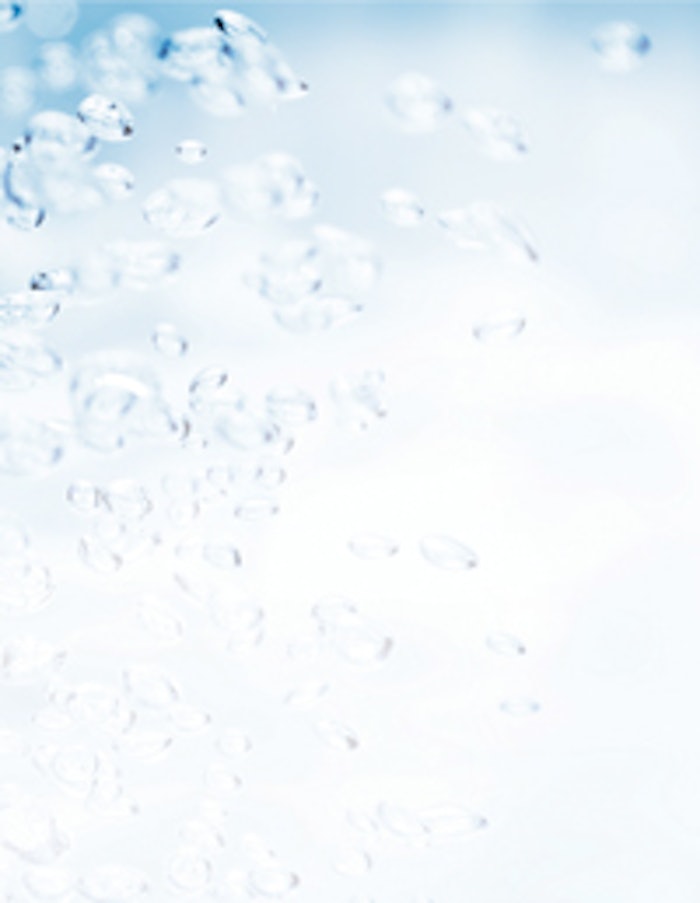
Approximately 20 years after pure oxygen treatments were introduced to the professional skin care market, fundamental questions about the efficacy and effects of such services remain. Estheticians and physicians alike continue to ask, “Is oxygen good for skin?” “How does an oxygen treatment work?” and “Does the oxygen really penetrate the skin?”
Many consumers and even some skin care professionals still wonder if there is any difference between an oxygen cream and an oxygen facial treatment at a spa. After all, isn’t all oxygen the same?
It is important to clearly understand the role of pure oxygen in modern skin care. In a controlled manner and for a specific purpose, modern modalities, such as microdermabrasion, enzymatic and deep chemical peels, and mechanical peels can sometimes injure the skin by stripping away the top layers of the epidermis. Such procedures necessitate the use of skin care tools to help clients heal faster and feel better about the process. Therefore, the most recent advances in restorative skin care center around treatments and products that soothe, cool and heal the damage done by aggressive procedures, as well as aging, sun exposure, poor diet and generally unhealthy lifestyles.
Oxygen and healing
Physicians and skin care professionals have known for years that proper amounts of pure oxygen help produce new skin cells and maintain healthy skin overall. What is rapidly gaining wide acceptance, however, is the concept of applying oxygen topically immediately after invasive procedures. This is done to soothe overstimulated skin, reduce edema and erythema, and speed the healing process.
Published medical studies, such as the one conducted at the University of Ohio Medical Center in 2003 as presented in the journal Pathophyisology1, indicate that topical oxygenation at slightly above normal barometric pressure does have a demonstrably beneficial effect in speeding the healing process. This is partially accomplished by the enhanced elimination of harmful bacteria, creating an environment that is supportive of tissue repair.
It is also known from both empirical and anecdotal evidence that oxygen strengthens collagen and elastin fibers, which are responsible for the tensile strength and resiliency of skin, and encourages the more rapid turnover of skin cells.2 The latter benefit is largely a result of the adenosine triphosphate (ATP) energy release created during the breakdown of oxygen molecules in the body.
In short, large amounts of oxygen are necessary for the health of skin tissue. Without a steady supply of oxygen, all cells will cease to function in very short order. Although oxygen is not the only element necessary for healthy skin and skin cell production, it has been shown to aid in the correction of a vast number and variety of common skin ailments, ranging from skin that is dehydrated, acne- or rosacea-plagued, and even sun damaged. How does this well-known gaseous element that comprises 21% of the air do all of this?
Oxygen and the skin
To answer that, it is important to examine the composition of human skin. It consists of two main layers—the epidermis, which is the outer layer, and the dermis, which is the first inner layer. The outermost layer of the epidermis, known as the stratum corneum, is hard, scaly and lifeless. It forms a protective layer for the softer, living tissue below and performs a number of functions, including protecting the body from foreign substances and retaining its natural moisture.
New skin cells are produced through a process called mitosis, in which a cell divides and produces a whole new cell. These new cells begin in the junction between the dermis and the epidermis and migrate outward to the epidermis, eventually being sloughed off naturally or mechanically.
The epidermis is the only part of the skin that can be seen; therefore, it is where most traditional skin care focuses. But herein lies the main difference between today’s sophisticated skin care and your mother’s greasy moisturizers. The real action of the skin—including the key functions of producing new skin, as well as collagen and elastin cells—is in the epidermal junction, not on the epidermis. What is seen with the naked eye are dead skin cells, and it’s too late to help them.
Advanced skin care products and treatments seek to affect the cells as they are forming and to speed up the process of moving those cells to the epidermis, a process known as cell turnover. The newer and more healthy the cells at the epidermal level, the better and younger the skin looks.
But how can treatments affect cells that are deep down in the layers of the skin? Scientific principles, such as advanced delivery systems, must be used to place nutrients, including oxygen, where the body can utilize them in order to form healthy new skin cells.
The body’s main oxygen supply comes from breathing air into the lungs where oxygen molecules attach themselves to red blood cells. These cells then work their way through the circulatory system to the organs, including the skin. However, as a person ages, this process slows down, and the ability to use and retain oxygen is reduced. Add to this the normal aging process that has been accelerated by sun, stress, poor diet, lack of exercise and free radicals, and you have a sluggish and overburdened cell metabolic process. The result of this slowdown is skin that looks dry and dull.
The best oxygen products and treatments will restore the proper levels of oxygen to the skin in order to enhance not only the health and well-being of the cells already born, but also those that are in the process of being created. And this is exactly why advanced oxygen skin care treatments and products are so controversial.
The idea of applying oxygen topically to the skin and having it penetrate to the area of skin cell generation is often rejected. One of the main reasons cited is the protective role of the natural skin barrier, or acid mantle. Its job is to keep anything from going beyond the epidermis. In fact, this barrier is penetrable and must be treated carefully to avoid losing its protection. The barrier function of the skin is very delicate and depends on maintaining a certain level of pH balance to keep its integrity. This explains why many skin cleansers today claim to be pH-balanced.
Some new product and treatment technologies are increasingly designed to put the proper level of oxygen, vitamins, minerals and other nutrients back into the skin. There are currently many creams, lotions, masks and sprays available to clients to put oxygen onto the skin. Because of the multitude of choices available, it is important to teach your clients that oxygen placed on the surface of unprepared skin will not penetrate beyond the epidermis. Yet, oxygen placed on the surface of the skin is a good thing. Oxygen is a natural antibacterial agent that effectively fights bad bacteria that cannot survive in an oxygenated environment. This can help with surface acne and helps to fight infection from open wounds.
For normal, noninjured skin, the natural barrier function will prevent oxygen from penetrating down to the dermal layer. Oxygen’s most exciting and effective benefits are its ability to boost cell production, and strengthen collagen and elastin. These benefits can only be realized by getting the oxygen through the epidermis and into the dermal layer, and such penetration can only be accomplished by first removing the skin’s protective barrier. Once temporarily stripped away, the epidermis becomes a semipermeable membrane that allows for the passage of certain materials.
Guide your clients
It is your role as a skin care professional to educate clients in order to help them avoid buying products or treatments that make claims without foundation and scientific principles supporting them. Explain to your clients that the only way to achieve oxygen penetration is to have an oxygen treatment professionally administered in a spa. No topical application will provide the major benefits of oxygen.
It will likely take years for the benefits of pure oxygen in skin care to be universally accepted, and the virtues of oxygen are just beginning to be understood. The wide availability and affordability of pure oxygen treatments at the spa level, combined with modern oxygen equipment, is a real boon to the professional skin care industry. By doing your part, you can educate clients about the benefits of oxygen and provide treatments in your spa to help improve your clients’ skin health.
REFERENCES
1. LK Kalliainen, GM Gordillo, R Schlanger and CK Sen, Topical oxygen as an adjunct to wound healing: a clinical case series, Pathophyisology 9 81–87 (2003)
2. www.nmji.in/archives/Volume_19_6_Nov_Dec_2006/classics/Class1.htm (Accessed Dec 10, 2009)
For an extended scientific explanation about oxygen and its effect on the skin, see “The Practical Use of Topical Oxygen” by Peter T. Pugliese, MD.










